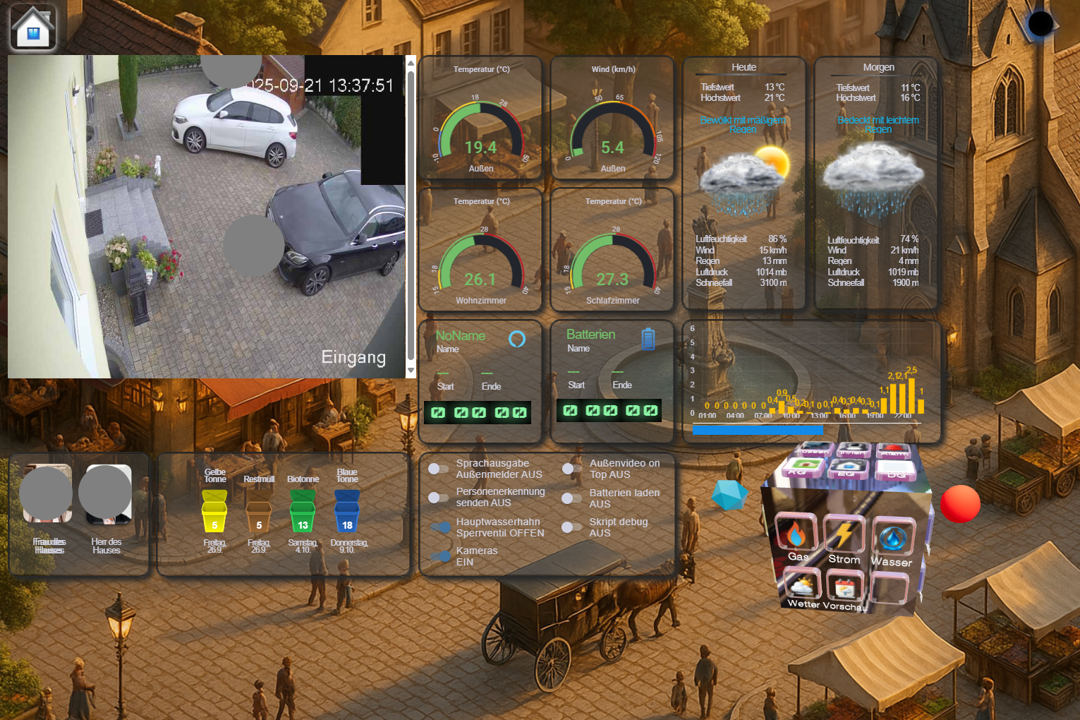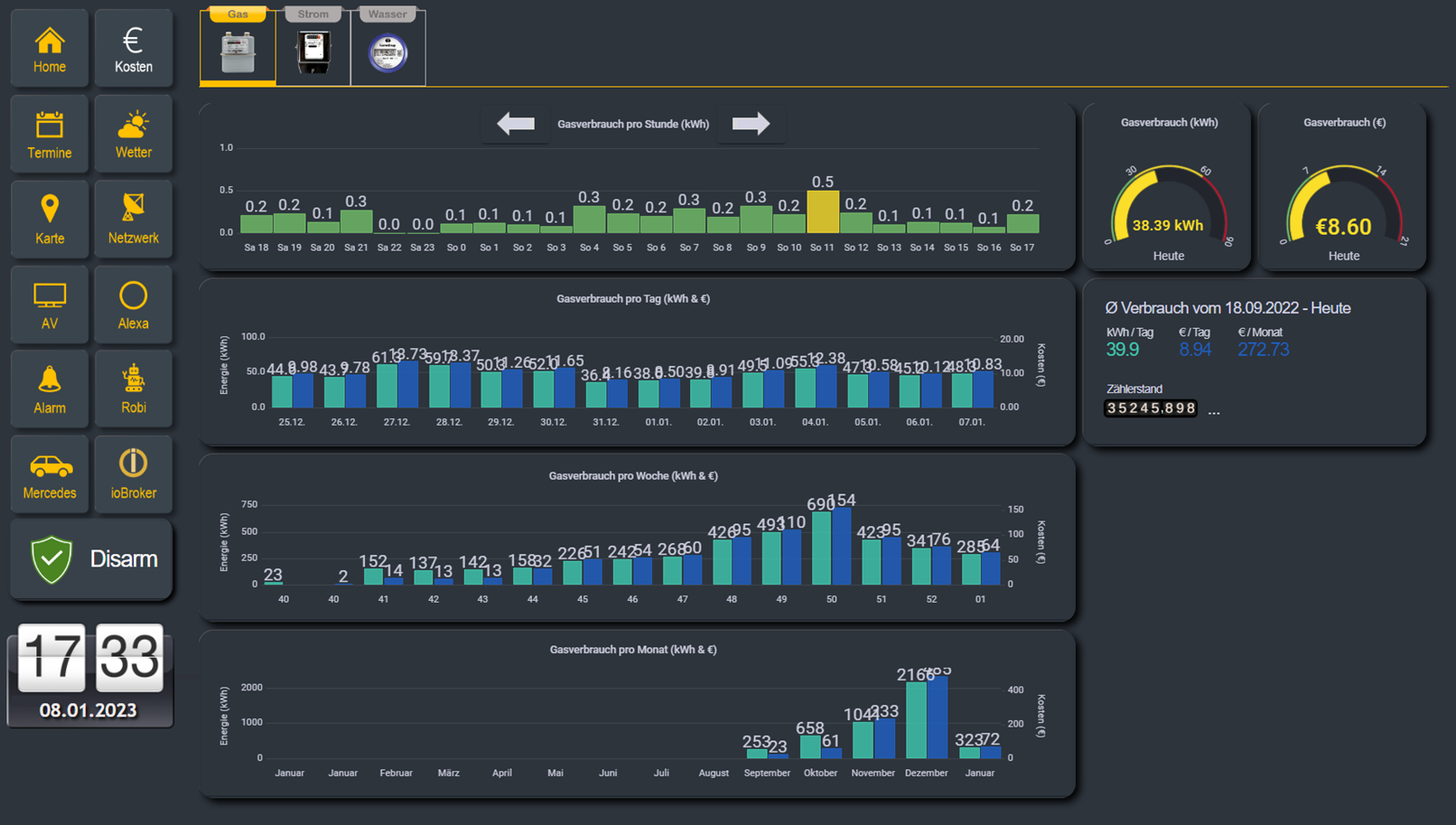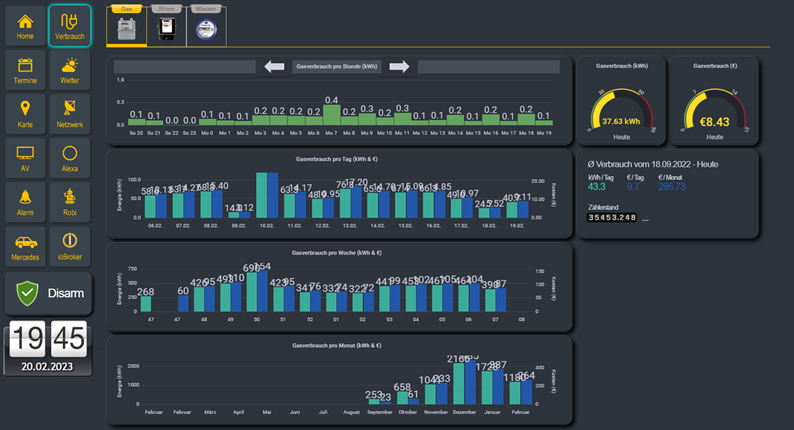Hallo zusammen,
bin nun auch schon einige Jahre mit ioBroker unterwegs und hab im Grunde all die Jahre auch immer am UI gearbeitet.
Ich setze noch vis-1 ein, hier als zentrale Steuerung aber html/css/javascript.
Mittlerweile habe ich ein Menu als 3D-Würfel realisiert, vor allem um Platz zu sparen, aber eben auch mal etwas Neues auszuprobieren. Basiert auf three.js.
Anbei ein Screenshot und hier ein Demo-Video.
Mir geht es nur um einen Ideenaustausch, vielleicht hat jemand noch eine ganz andere Menüsteuerung erfunden.
Zur Verfügungstellen geht leider nicht, es sind einfach zuviele Abhängigkeiten und spezifischer js-Code vewendet worden.
Danke
ExMatador




